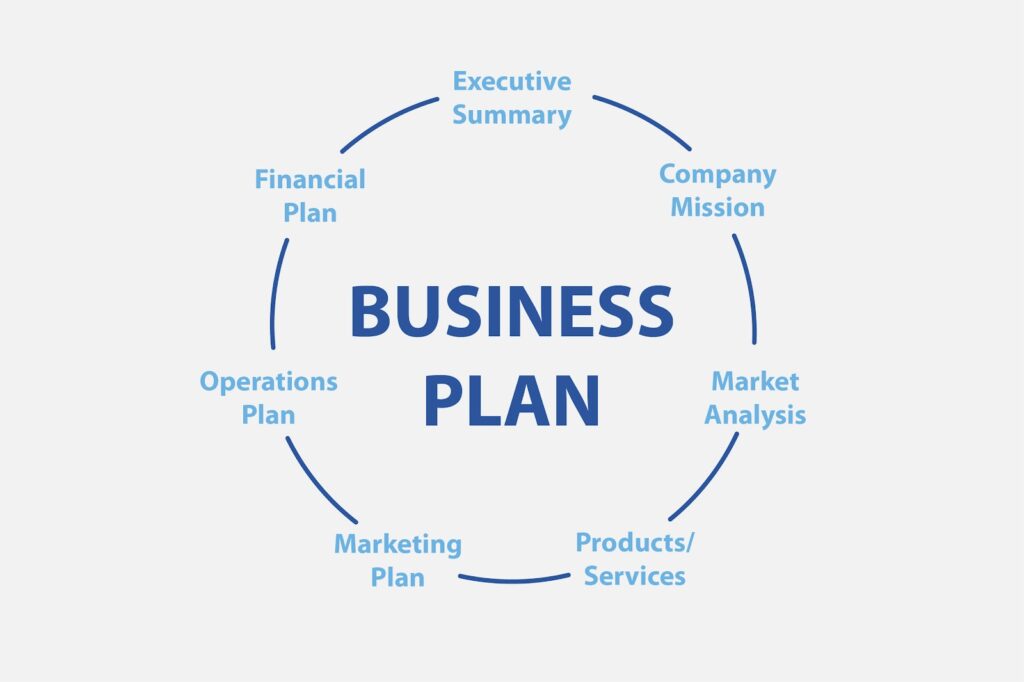eCommerce businesses have seen immense growth in the last decade and it is rightly referred to as the new world of opportunities, but a planned expansion of several sales, marketing and outreach activities can make the business more visible online and offline. The eCommerce business plans which are developed for the growth of the venture along with stakeholders for the future prospects are called eCommerce business plans. These documentation mediums are complex, exhaustive and self-explanatory in nature which streamlines the targets, visions, goals and objectives of the company.
What is the need?
To understand why growth is more about business plans, the following write-up has been broken into several subheadings reflecting on with whom the plan should be developed and by when, and how it needs to be formulated.
The need for an eCommerce business plan is not just writing the goals but also relating to how the visions, and missions align with the objectives. The business plan is developed with the core team members and several other stakeholders who foresee the future of the venture. But one should not assume that the e-commerce plan is developed once and it is not open to revisions. That’s not true. Anyone who prepared the plan for their e-commerce business can revise, edit, add and subtract the targets as per their convenience. Because in the internet age things are changing more rapidly than expected. For eg: in the early days of online shopping giants like Flipkart and Amazon were the online suppliers but now India has Meesho which is helping small retailers to come online and sell their goods.

How to write an e-commerce business plan?
Now to understand more about how to write the eCommerce business plan, we can use the following pointers and categorise the targets accordingly.
Step 1: Executive Summary
The executive summary is the first section of your business plan and provides a high-level overview of your e-commerce business. It should include the following key elements:
- Business Name and Description: Briefly introduce your business and describe the products or services you will offer.
- Market Analysis: Analyse your target market, competition, and market trends to better understand your customers and their needs.
- Marketing and Sales Strategies: Outline how you plan to attract and retain customers, such as through social media marketing, search engine optimization (SEO), and email marketing.
- Financial Projections: Provide an overview of your financial projections, including revenue, expenses, and profitability.
Step 2: Product and Service Offerings
In this section, you will describe the products or services you will offer and how they will meet the needs of your target market. This should include:
- Product or Service Description: Provide detailed information on each product or service, including features, benefits, and pricing.
- Unique Value Proposition: Explain how your products or services are different from those of your competitors and why customers should choose your business over others.
- Production and Distribution Plan: Outline how you plan to produce and distribute your products or services, including manufacturing processes, suppliers, and delivery methods.
Step 3: Market Analysis
This section is where you will analyse your target market, competition, and market trends. You should include:
- Target Market: Identify your target customers, including demographic information such as age, income, and location.
- Market Segmentation: Segment your target market into smaller groups with similar needs and characteristics.
- Market Trends: Analyse market trends, such as consumer behaviour and purchasing patterns, to better understand your customers and their needs.
- Competitor Analysis: Research your competitors, including their strengths and weaknesses, to better understand the competitive landscape.
Step 4: Marketing and Sales Strategies
In this section, you will outline how you plan to attract and retain customers, including:
- Marketing Mix: Describe the four Ps of marketing (product, price, promotion, and place) and how they will be used to reach your target market.
- Sales Strategy: Outline your sales strategy, including how you will generate leads, close deals, and build customer relationships.
- Customer Retention: Explain how you plan to retain customers, such as through loyalty programs and excellent customer service.
Step 5: Financial Projections
This section is where you will provide financial projections for your eCommerce business, including:
- Sales Forecast: Project your expected sales for the next three to five years, based on your marketing and sales strategies.
- Expense Budget: Create a budget for expenses, including costs for product development, marketing, and operations.
- Profit and Loss Statement: Project your profits and losses for the next three to five years, based on your sales forecast and expense budget.
- Cash Flow Statement: Project your cash flow for the next three to five years, including the sources and uses of cash.
Step 6: Implementation and Management
In this section, you will outline your implementation plan, including:
- Action Plan: Create a detailed action plan, including tasks, timelines, and resources needed to achieve your goals. This will help you break down your overall strategy into manageable steps and ensure that you stay on track as you launch and grow your business.
- Organisational Structure: Explain the structure of your business, including who will be responsible for different aspects of the business, such as marketing, operations, and finance. This will help you ensure that everyone involved understands their roles and responsibilities and can work together effectively.
- Technology and Tools: Discuss the technology and tools you’ll need to run your business, such as website development and hosting, payment processing, and customer relationship management software. This will help you identify any gaps in your technology and ensure that you have everything you need to be successful.
- Risks and Challenges: Identify the potential risks and challenges your business may face and describe how you plan to mitigate or manage them. This will help you prepare for any obstacles and ensure that your business is well-positioned to succeed.
It is important to remember that an eCommerce business plan is not a one-time document, but rather a living document that evolves as your business grows and changes. Regularly reviewing and updating your plan will help you stay focused on your goals, make informed decisions, and adapt to the changing market and customer needs.
By regularly monitoring your progress and making adjustments as needed, you can ensure that your eCommerce business plan remains relevant and effective, and that your business continues to grow and thrive.
The eCommerce business plan is not supposed to be boring, or traditional but it gives the opportunity to share the creativity to showcase why someone should choose you over others. The e-commerce business plan can be developed as an interactive e-commerce business pdf or maybe an e-commerce business ppt to attract and grab attention.
